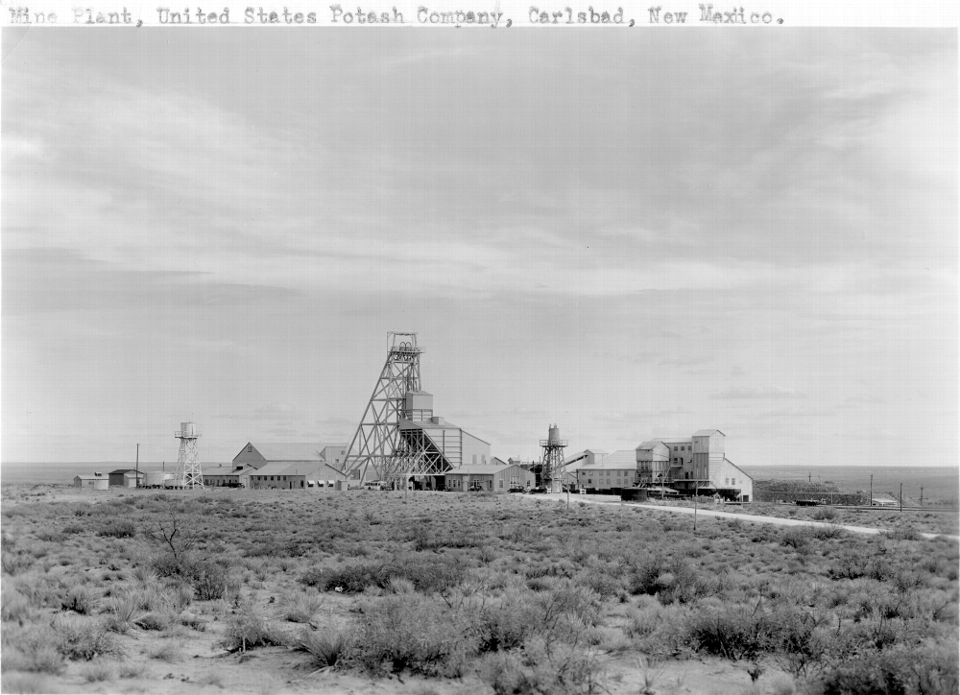
Image of the Day — U.S. Potash Mine and Plant
Posted: Saturday, December 7, 2024

Mine and plant of U.S. Potash Company at Carlsbad, New Mexico,1935.
Image taken:
10/18/1935
©
1935
New Mexico Bureau of Geology and Mineral Resources, Historic Photograph Archives
Courtesy of the New Mexico Mining Association
Longitude: -104.110734
Latitude: 32.414877
(WGS 84 or NAD 83)
About this image
The Geology of Potash
Potassium is the seventh most abundant element in the earth’s crust and the sixth in seawater. It is a major constituent of many surface and subsurface brines. Most potash deposits were precipitated from evaporated seawater or nonmarine water in restricted environments in an extremely arid region, such as estuaries, where outflow of evaporation-concentrated brine is restricted. The result is bedded potash in large, high-grade deposits amenable to low-cost mining and processing. There are few places on Earth today with conditions sufficiently arid to produce significant potash deposits.
Potash-bearing evaporites are in Upper Permian (Ochoan, 250 million years old) marine rocks in the Delaware Basin of west Texas and southeast New Mexico. The Ochoan Series contains four formations: the Castile Formation (oldest), the Salado, potash-bearing mainly in the McNutt Member, and the Rustler and Dewey Lake Formations. The Salado Formation hosts twelve potash zones, eleven of them in the McNutt Member. The area underlain by these twelve ore zones covers about 1,900 square miles. The McNutt Member of the Salado consists of sylvite and langbeinite with halite, anhydrite, and other potash minerals. The potash minerals we see today are secondary, recrystallized from the primary marine minerals that originally precipitated from the mineral-rich brines, and their distribution is independent of original lithology. Typical mixed sylvinite ore from the Salado contains about 60 percent halite and 30 percent sylvite, 5 percent langbeinite, 2 percent polyhalite, and 3 percent insolubles.
[exerpted from: New Mexico Potash—Past, Present, and Future(4.26 MB) by James Barker and Ibrahim Gundiler, 2008, New Mexico Earth Matters v.8 no.2]
Image posted: 12-17-2021


